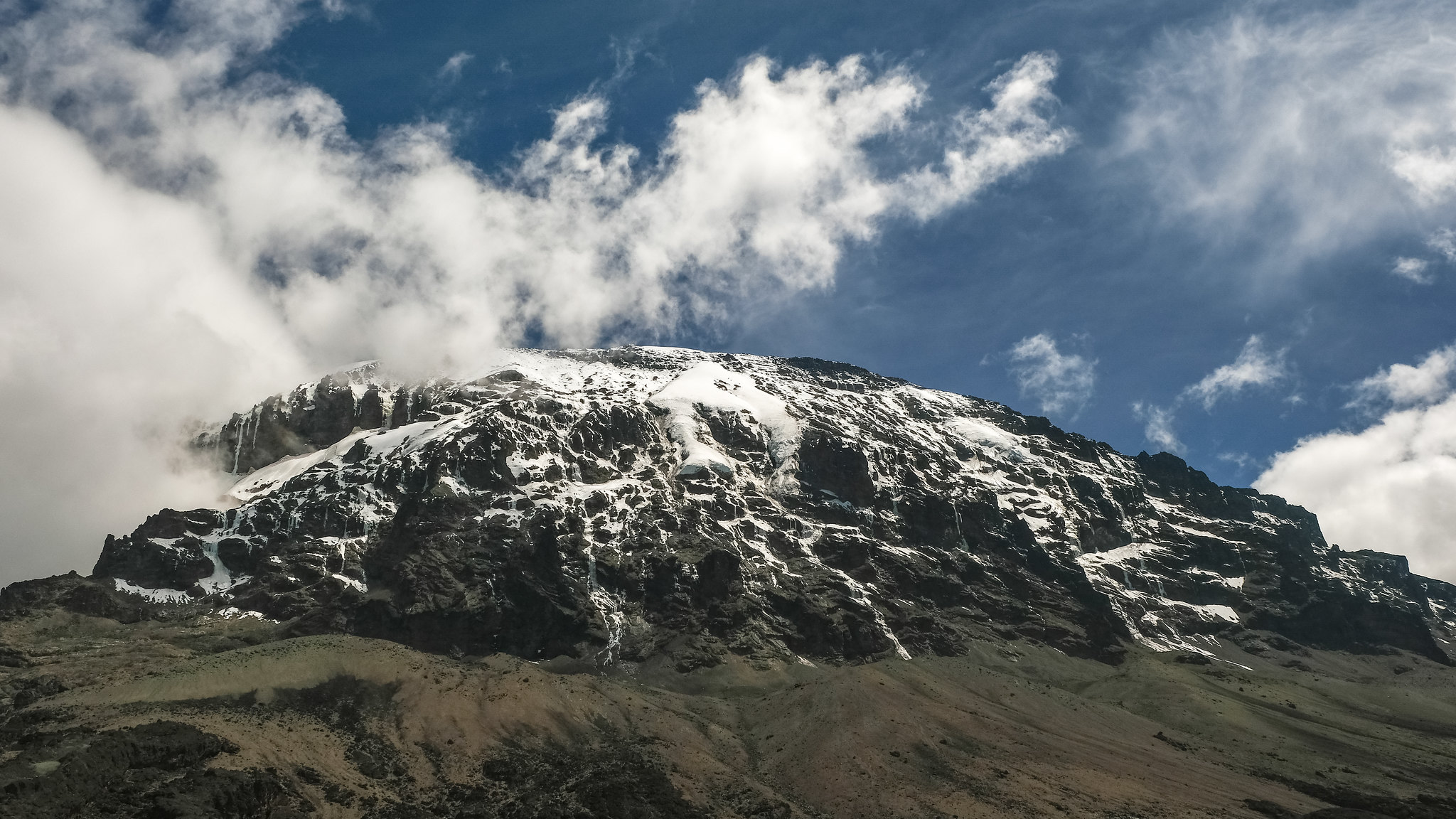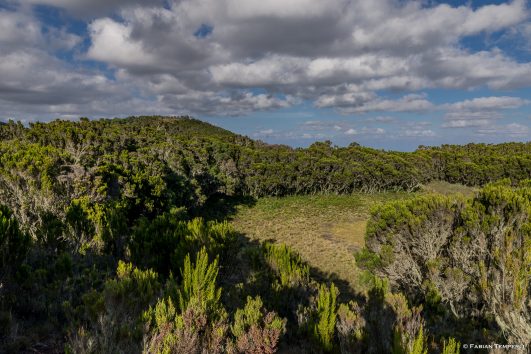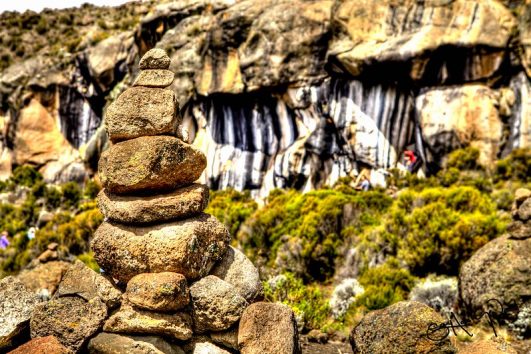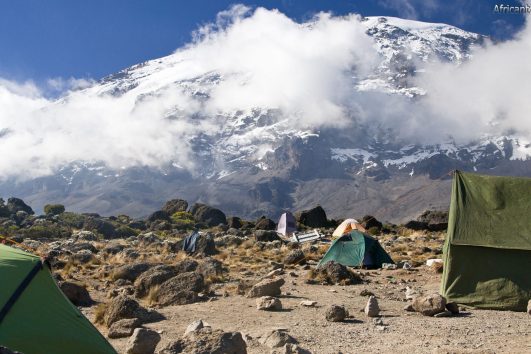Heim Glacier Elevation / Altitude: 5,150 meters
Back in the day, Heim Glacier was a very popular spot for glacier climbing before it diminished and eventually dissapeared before the year 1996. The Northern ice fields has shrank in size and most of its glaciers have dissapeared and half of the Furtwängler Glacier has receded.
Perhaps the best view of the Heim Glacier should be from the Karanga Valley along the southern circuit of Mount Kilimanjaro where you will have a good view of the Heim glacier on your left and Kersten Glacier on your right forming the Southern ice field. Heim Glacier is also visible from Barranco Camp (3950 m) on your right, while,on the left, Balletto Glacier and Diamond Glacier (Reinhold Messner’s route) are also visible surrounded by giant lobelias and scenecios.
The ice near the crater rim is no longer linked to further glaciers and smaller ice masses that are still present on the slopes. These include the Little Penck remnant on the west side, the Heim and Great Barranco Glaciers on the southwest edge.
Your greatest and closest view of Kibo’s glaciers is the prize. The diamond glacier ‘drips’ over the rock to the left, situated on top of the steep cliff of the western breach, with gigantic icicle tendrils stretching down to the Balletto Glacier on the shelf below. The Heim, Kersten, and Decken glaciers sag over their uneven granite substrate to the right.
Hans Meyer made the first in-depth observations of Kilimanjaro’s glaciers in the late 1880s, and since then, several studies have recorded the catastrophic decline, but surprisingly few have provided precise maps of the glaciers. Early analyses that were made relied mostly on terrestrial photogrammetry and ground-based observations (e.g. Meyer, 1891, 1900; Jaeger, 1909; Klute, 1914, 1920, 1921; Downie et al., 1956; Humphries, 1959). Recently, the preferred tool for describing the continuous retreat has been remote sensing techniques combining both aerial photography and satellite data.
Snow on Kilimanjaro on Kibo, snow is transitory, meaning it either melts and vanishes or changes into glacier ice in a short amount of time (i.e., minutes to months).
In this context, the term “snow” only refers to solid precipitation, or to that which has accumulated as snow cover on the surfaces of either glaciers or craters. While Kilimanjaro’s glaciers are a constant and long-lasting feature, snow cover is not, and ancient writings suggest that snow has always come and gone with great frequency.
Southern Icefield is formed by the Heim, Kersten, Decken and Rebmann Glaciers.
Kersten glacier
Decken Glacier
Also forming the larger Southern Iciefiled, Decken Glacier was named in honour of explorer Baron Carl Claus von der Decken and is located in the Southern sloped of Mount Kilimanjaro.
Global warming and the shrinking Kilimanjaro glaciers
Over the past few decades, the Kilimanjaro Glacier has been steadily thinning. Recent research indicates that just in the last few years, the snowy summit of Africa’s tallest peak has significantly decreased. Approximately 85% of the snowfall since 1912 has since disappeared. Regular climbers of Mount Kilimanjaro will remark how much less snow there is currently. There may be a variety of causes for this. But it is undeniable that Mount Kilimanjaro’s glaciers may completely vanish by 2030.
Additional information
| Routes | All Routes |
|---|---|
| Vegetation | Arctic Zone |





Tour Reviews
There are no reviews yet.
Leave a Review